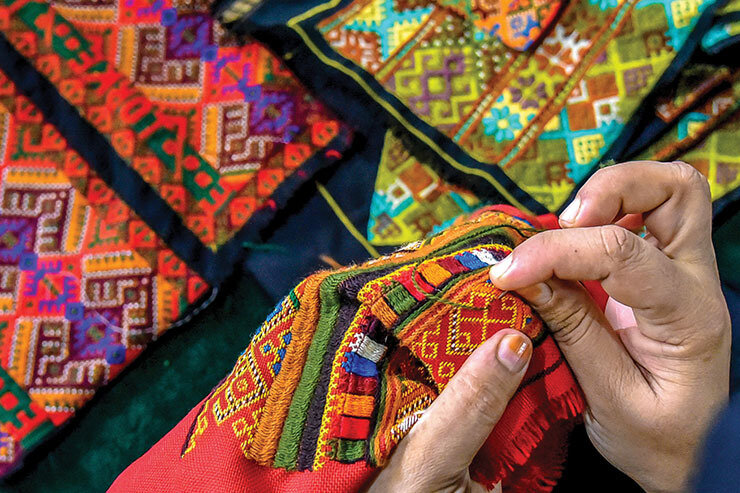Baluchi needlework to go on show

TEHRAN – Collections of Baluchi needlework, made by female artisans of Iran’s Sistan-Baluchestan province, will go on display in an exhibition at Tehran’s Iranology Foundation, ILNA reported on Friday.
According to organizers, a variety of traditional needlework will be on display at the exhibition, including Fanuji-duzi, Kohneh-duzi, and Gazaf-duzi, which are typically embroidered on women’s clothing.
The exhibit, which will open to the public on Saturday, will come to an end on Wednesday.
Needlework (Souzan-douzi in Persian) is a very common occupation among people of the southeastern province. It is the art of drawing images on plain fabrics by sewing delicate stitches using a needle and colorful yarns. They are mainly used to embellish women’s clothes; however, such works are applied to decorate bracelets, necklaces, bags, and scarves.
Last October, Iran’s Anthropology Research Institute published an atlas of traditional clothing and attires of people who are natives of the southeastern province. To preserve indigenous traditions and original clothing, it seems vital to revive indigenous clothing and its effectiveness today, the research institute said.
The collective province -- Sistan in the north and Baluchestan in the south -- accounts for one of the driest regions of Iran with a slight increase in rainfall from east to west, and an obvious rise in humidity in the coastal regions. In ancient times, the region was a crossword of the Indus Valley and the Babylonian civilizations.
The province possesses special significance because of being located in a strategic transit location, especially Chabahar which is the only ocean port in Iran and the best and easiest access route of the middle Asian countries to free waters. The vast province is home to several distinctive archaeological sites and natural attractions, including two UNESCO World Heritage sites, namely Shahr-e-Soukhteh (Burnt City) and Lut desert.
ABU/AFM
